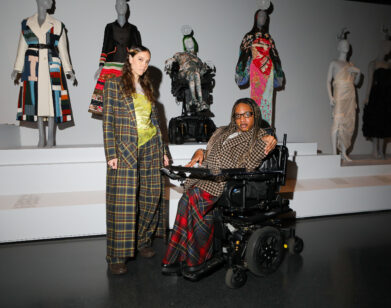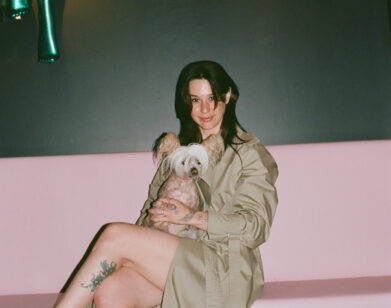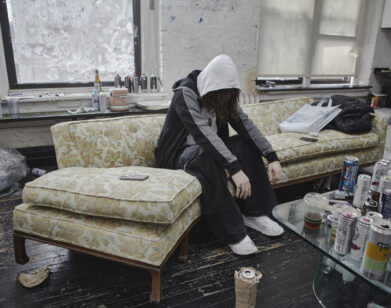Tim Burton’s Nightmare at the Museum

Courtesy of The Neon Museum.
In his 1996 alien invasion farce Mars Attacks!, Tim Burton set a sequence at The Neon Museum, a graveyard of signs in Las Vegas that once advertised the city’s casinos and restaurants. More than two decades later, the visionary director returns there with Lost Vegas, his first American museum show in almost a decade. The exhibition features original digital and sculptural installations of some of his most memorable oddities and includes a 40-foot neon sign and a carousel of colorful seahorses. Many of the works nod toward Burton’s lifelong fascination with Las Vegas itself, a city as far-out as his own imagination.
———
AMANDA FORTINI: How long have you been coming to Las Vegas?
TIM BURTON: Since I was a baby.
FORTINI: Can you talk about some of your early memories of Las Vegas and how they have inspired your work?
BURTON: The earliest and the most visceral are those giant seahorses.
FORTINI: At the pool at The Dunes hotel and casino? You invoke them in the show.
BURTON: Yeah. You know how you have a memory of something and it’s not just a memory, but a feeling? That, for me, was these colored giant seahorses spewing water, and me looking up at them going, “Oh, my god, this is Vegas.” Then you see pictures of it later, and it looks like seahorses in a bad miniature golf course. I also remember that as a child, kids weren’t allowed into the casino. There would be these big, armed guards standing there. Meanwhile, the adults are acting weird in the other room. Drinking, drugs—whatever they were doing. It’s like you’re hallucinating.
FORTINI: You’ve said that some of your characters—Mummy Boy, Oyster Boy, and Stain Boy, for example, who are all in the show—are entwined with your memories of Vegas. How?
BURTON: These characters are like dreams. They’re snippets of emotional memories. I always find a weird sadness here. It’s like when I used to wander around the Santa Monica Pier as a child. There’s something about these old, faded, seedy amusement parks that I’m attracted to, that made feeling lonely more dramatic.
FORTINI: Do you have memories of being alone as a child growing up in Burbank?
BURTON: Of course. I’m sure everybody does. I think everybody is alone. That’s how I felt, and then it just never really left.
FORTINI: How did you spend your time?
BURTON: Watching movies, drawing, living in a parallel universe.
FORTINI: What were some of your formative influences?
BURTON: Japanese monster movies. A lot of the old Universal Monsters. I found them emotional. I connected to these creatures because I felt like them. You find connections in things like monster movies or your environment. My horrible suburban hellish environment. It’s inspiring.
FORTINI: Inspiring how?
BURTON: You feel trapped. You feel lonely. Luckily for me, you take all those feelings and you try to use them in a creative way.
FORTINI: Do you keep a work schedule?
BURTON: Not at all. I just do my little snippets and drawings—it’s like an abstract little diary.
FORTINI: Do you e-mail or have a computer?
BURTON: No. I’m starting to text. I don’t go on Facebook. For me, it’s not good. I’d end up watching weird cat videos all day. I’d go down a dark path.
FORTINI: How does it feel to have your images everywhere? They’ve become so iconic, so replicated.
BURTON: Here’s the thing: I struggled my whole life to be a person. Then I became this thing, and I find it flattering, but also slightly disturbing. It’s like what they say about people in other cultures when you take their picture—that you’re taking a bit of their soul. And so, creatively, when they take Beetlejuice and they turn it into a musical, and it has nothing to do with me, I feel strange. I can’t even tell you how I feel.
FORTINI: Because those were part of you?
BURTON: Right. I’m going to start crying right now.
This article appears in the winter 2019 issue of Interview magazine. Subscribe here.






